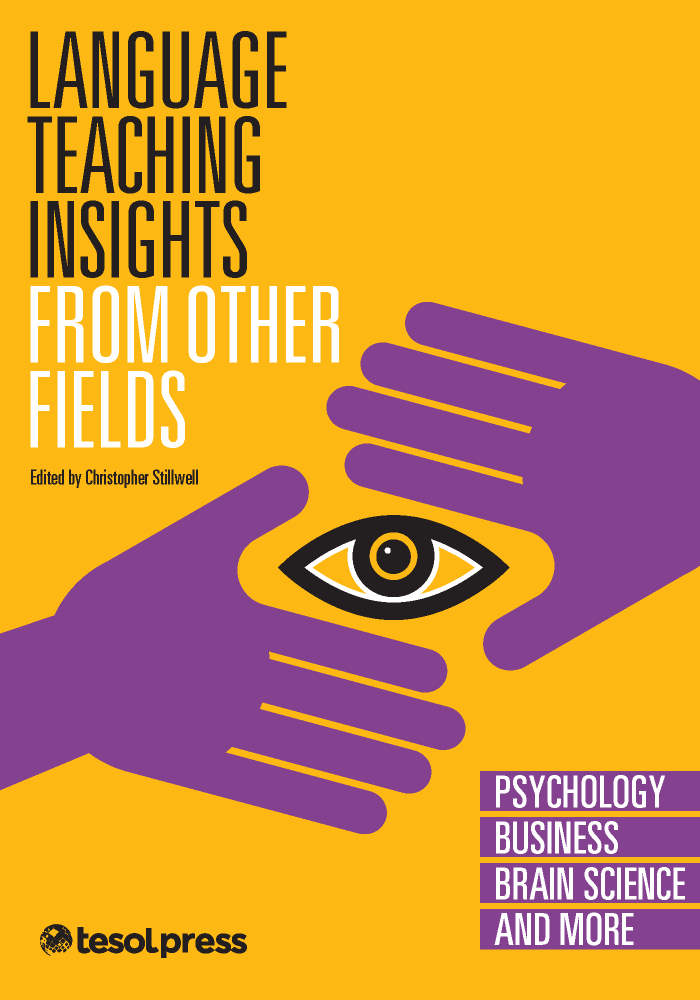|
 Chapter 2: How Would a TV Commercial Producer Make Lessons as Memorable as an Ad? Chapter 2: How Would a TV Commercial Producer Make Lessons as Memorable as an Ad?
by Wendy Hendrickson
from Language Teaching Insights From Other Fields: Psychology, Business, Brain Science, and More, coming soon from TESOL Press.
What makes one lesson such a knowledge-transfer triumph, while others seem to dwindle quickly or even die upon student contact? Using a story to carry your message can make the difference between success and failure. Stories get the brain’s attention, keep it coming back for more, and eventually result in independent use of the knowledge. The challenge for both commercial producers and teachers lies in knowing how to choose the right story—and how to do it well.
A COMMERCIAL PRODUCER’S TIPS FOR LANGUAGE TEACHERS
When I worked in commercial production, I developed commercials and campaigns for local businesses, and it was my job to gather information from a business, get a feel for who the company was, and then create a message that would focus on what the company was about and wanted to accomplish. This core message needed to be remembered and acted upon. Your goal for a teacher is the same as it is for any commercial producer: know what the core message is, plant it into the minds of your audience, and have them act on it. As a teacher, I now use the same skills that I employed when I made those commercials to produce language skills in students.
Commercial producers and marketers are always analyzing successful commercials so that they can imitate their success. Two books that are popular with my friends still working in the field are Thinking, Fast and Slow (Kahneman, 2011) and Made to Stick (Heath & Heath, 2007). Both books shed light on why successful commercials work and why the “story” told in each commercial is the key. These books have given me a greater understanding of why I’ve had success with using stories in the classroom. The examples in the books explain how a story touches us and changes us, and therefore is remembered and often acted upon. Marketers know how to put this research into action; my belief is that language teachers can do it, too.
Tip 1: Identify your core message and put it in a story.
First you need to get a grasp on how a commercial producer or marketing professional uncovers a company’s core message and relays it as a story in a commercial. For a little perspective on the process, I called Gretchen Everett—the marketing director for Taco Time Northwest—to ask about the fast food chain’s recent change in commercials. From the beginning the founder of Taco Time had a passion for fresh and healthy ingredients. So the core message of the commercials was fast food that is fresh and healthy. This set the company apart from other fast food chains. Its mascot, Ned the talking cactus, poked fun at Taco Time for not really being fast food.
But as more and more national fast food chains (such as Subway) recognized that “healthy and fast” sold well, they started hopping on the “fast food can be healthy” bandwagon. Gretchen and her team realized that Taco Time was in danger of losing its distinctive identity in the market. Its core message needed a tweak. Taco Time worked to set itself apart from the national fast food companies once again. The company connected itself to an even greater idea. “Time and vision came together for us as the buy-local movement, anti-large corporation movement surfaced,” Gretchen passionately states (personal communication, June 28, 2012).
Taco Time’s pièce de résistance was its decision to become the locally owned company who buys locally. It now provides customers with the opportunity to be part of a noble cause in spades: It uses locally grown ingredients and buys other items from local suppliers. “We are fresh, healthy, and local to the core,” Gretchen says. That is the core message. One of the newest commercials pieces together a puzzle showing where that chicken, lettuce, and cheese on your Taco Time taco came from. That is the company’s story.
As a language teacher, your core message is what you want students to learn. You need to find a good story and use it as a vehicle to deliver your intended lesson content. There are detectable, repeatable elements in memorable stories. If you understand what the elements are, you’ll be able to look for them during planning. Let’s look at some good examples of story-containing commercials.
|